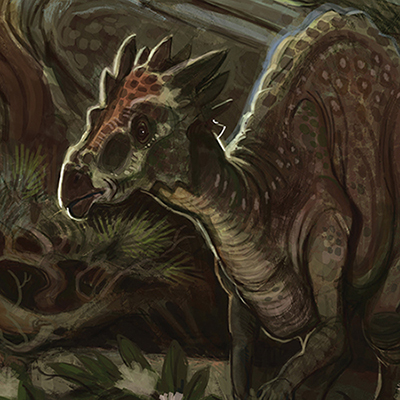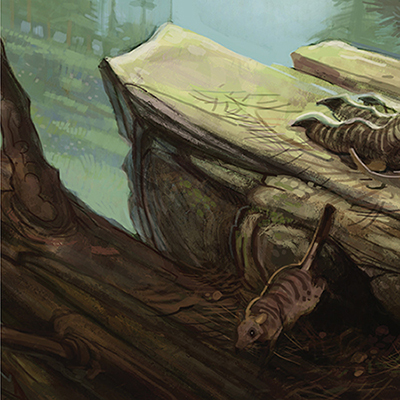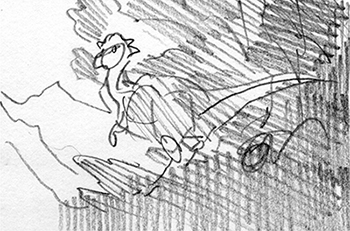
The thought of pachys clashing skulls similar to bighorn sheep made me think of the environment of mountain goats. I realized I’d never seen a depiction of a dinosaur in the mountains. I imagined a rugged subalpine terrain where they would be safe from large carnivores like T-rex. Its habitat would be filled with conifers and varied vegetation to feed on, and inaccessible to large herbivores like sauropods. The reason that a diverse collection of today’s reptiles, birds and mammals live in this environment might be the same as the dinosaurs living millions of years ago.
For this painting, I envisioned a sweeping vista across a mountain valley to create a sense of scale and perspective. Winter is moving in fast as these fleet-footed dinos traverse a high mountain pass to migrate like birds to new winter grounds in the warm south. Illustrating a small family of pachys will help show the different crests that some paleontologists believe existed through the different growth stages and sexes of the same species. Like birds, the alpha male calls to another pachy group on the other side of the valley.



Sketch a few sample compositions to plan the drawing.
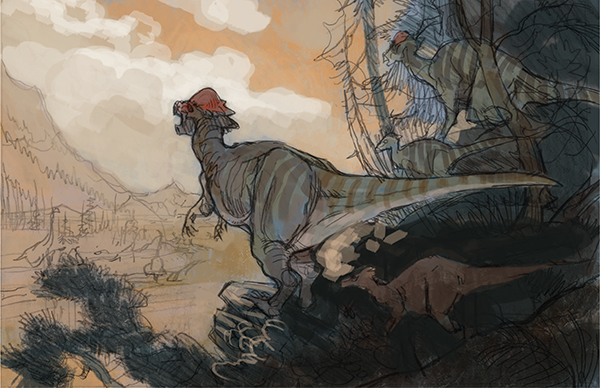
A rough digital sketch of the pachycephalosaurus in an autumn mountain vista.
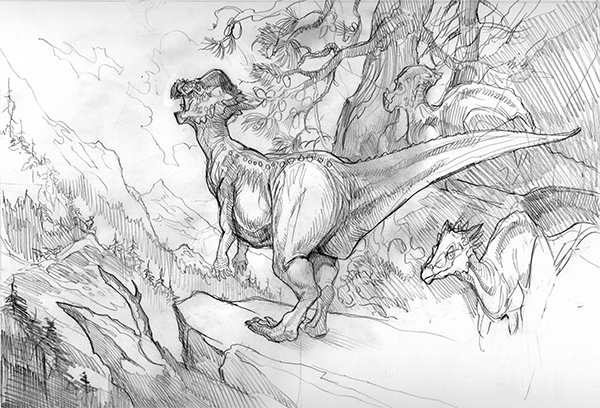
Render the finished drawing with pencil on paper using the preliminary sketches as a guide along with references from books and online.

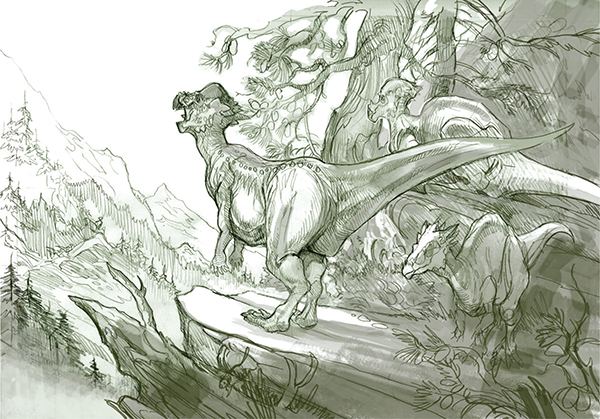
Import the drawing into the computer to make additional quick alterations and refinements.
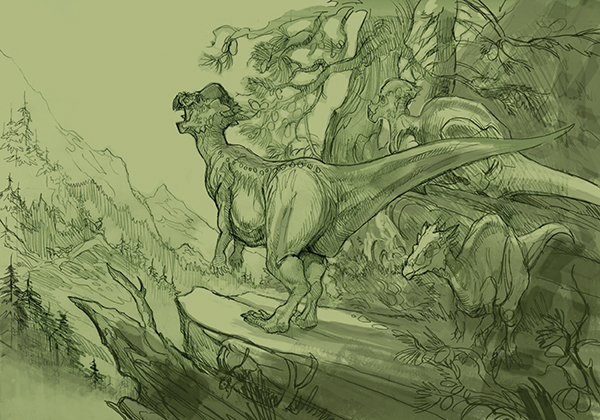
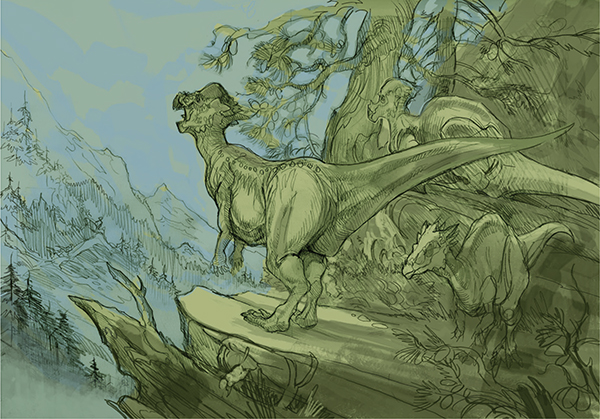
Beginning with broad, loose brushstrokes, establish the forms of color and light to create depth and atmosphere. Remember that this stage is for setting the tone of the overall image. Think about where the light is coming from and what time of day it is. Here I have created a twilight mood with low gold light from the foreground illuminating the distant peaks and clouds.
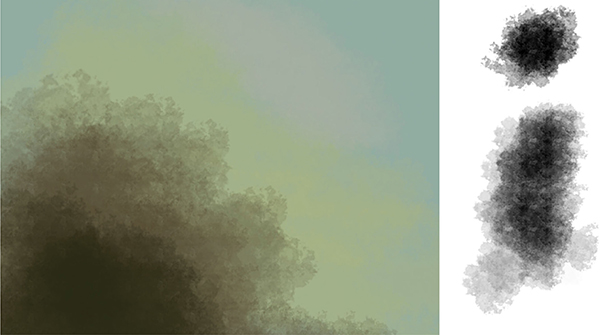
Color Palette and Key Brush

Using a variety of textural and natural brushes, refine the shapes of the clouds and mountains. This backdrop will be essential for framing the central focal point later.
For the head of the pachycephalosaurus, begin by establishing basic shapes for the crown, eye socket and jaw. Refine these forms and add details such as spikes and eyelids to bring the drawing into focus until color can be added on top. Exploring reference of birds will allow you to experiment with possible color patterns.
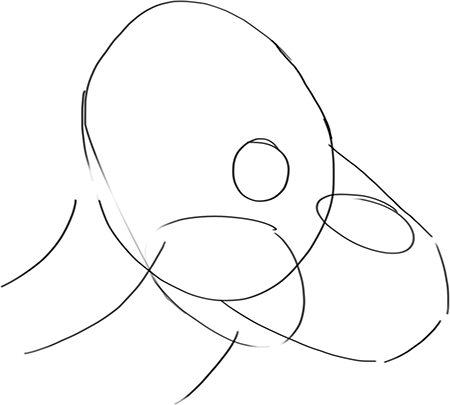
1

2
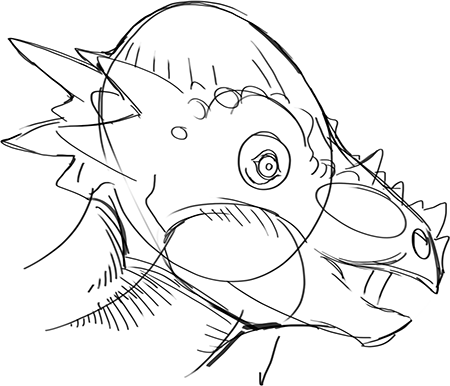
3

4

5
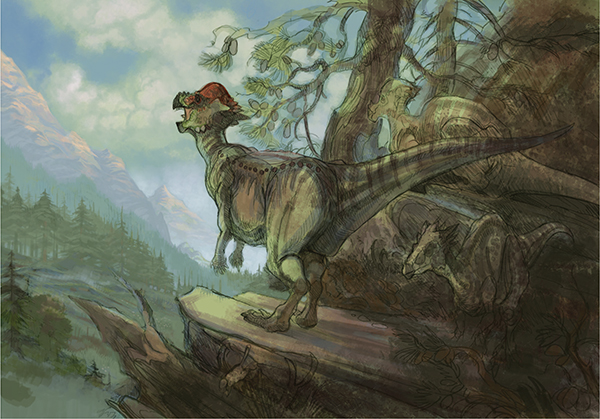
Silhouetting the main element of the male pachycephalosaurus in the center of the composition is the primary goal of this image. Refine the shape of the unique head of the pachy that dominates the middle ground of the painting. Add details to the hide and markings of the other dinosaurs, including the dracorexus on the right, to round out this family group.

Soft airbrush washes are used to create the foggy backdrop of the Cretaceous swamp.
First discovered in 2006 and classified as a new species, dracorex (“Dragon King of Hogwarts”) is now thought to have been a younger version of the pachy with an undeveloped head dome.

Dracorex hogwartsia
Length 10 feet (3m)
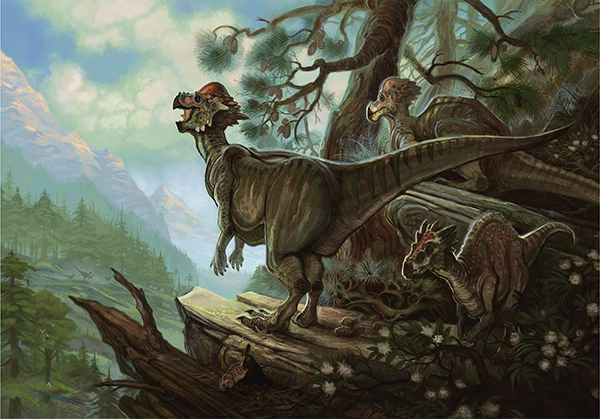
Add the foreground details to complete the painting. Here I included some early species of mountain laurel and pinecone-bearing conifers that may have existed in the late Cretaceous mountains. A small ground rodent dashes from his hole under the watchful stare of a young pachycephalosaurus.

